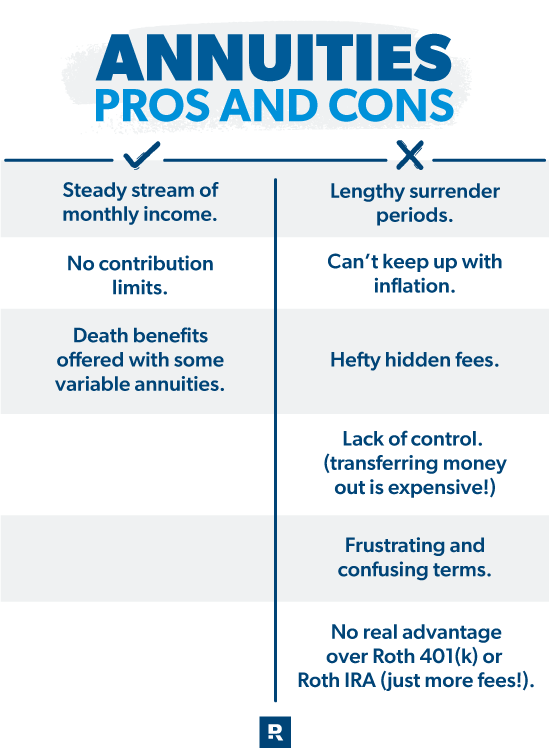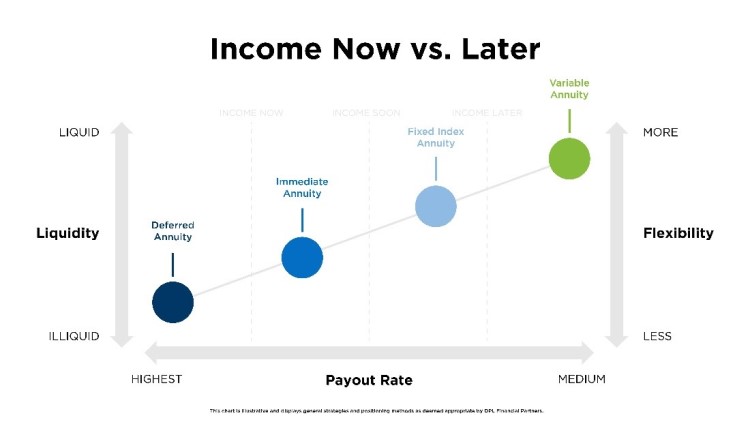All Categories
Featured
Table of Contents
Simply as with a taken care of annuity, the proprietor of a variable annuity pays an insurance provider a round figure or collection of repayments for the pledge of a collection of future settlements in return. But as stated above, while a dealt with annuity expands at an ensured, consistent price, a variable annuity expands at a variable price that relies on the performance of the underlying investments, called sub-accounts.

Throughout the buildup phase, properties purchased variable annuity sub-accounts expand on a tax-deferred basis and are taxed only when the agreement proprietor takes out those incomes from the account. After the accumulation stage comes the income stage. Over time, variable annuity assets should in theory raise in value up until the contract proprietor chooses he or she wish to begin taking out money from the account.
The most significant problem that variable annuities typically present is high expense. Variable annuities have a number of layers of charges and expenses that can, in accumulation, develop a drag of up to 3-4% of the contract's value each year.
Exploring the Basics of Retirement Options Key Insights on Your Financial Future What Is the Best Retirement Option? Benefits of Choosing the Right Financial Plan Why Fixed Income Annuity Vs Variable Annuity Is Worth Considering Fixed Income Annuity Vs Variable Growth Annuity: A Complete Overview Key Differences Between Fixed Income Annuity Vs Variable Growth Annuity Understanding the Rewards of What Is A Variable Annuity Vs A Fixed Annuity Who Should Consider Deferred Annuity Vs Variable Annuity? Tips for Choosing Fixed Vs Variable Annuity Pros Cons FAQs About Planning Your Financial Future Common Mistakes to Avoid When Planning Your Retirement Financial Planning Simplified: Understanding Fixed Income Annuity Vs Variable Annuity A Beginner’s Guide to Indexed Annuity Vs Fixed Annuity A Closer Look at How to Build a Retirement Plan
M&E cost fees are determined as a percentage of the agreement worth Annuity providers hand down recordkeeping and other management costs to the contract owner. This can be in the type of a level yearly charge or a percent of the contract value. Management costs might be consisted of as component of the M&E risk cost or might be assessed individually.
These charges can range from 0.1% for passive funds to 1.5% or even more for proactively taken care of funds. Annuity contracts can be personalized in a variety of ways to serve the particular demands of the agreement owner. Some usual variable annuity cyclists consist of assured minimum build-up benefit (GMAB), guaranteed minimum withdrawal advantage (GMWB), and guaranteed minimum income advantage (GMIB).

Variable annuity contributions offer no such tax reduction. Variable annuities often tend to be highly inefficient vehicles for passing wide range to the future generation because they do not take pleasure in a cost-basis change when the initial agreement owner passes away. When the owner of a taxable financial investment account dies, the expense bases of the financial investments held in the account are gotten used to show the market prices of those financial investments at the time of the owner's death.
Decoding How Investment Plans Work A Comprehensive Guide to Retirement Income Fixed Vs Variable Annuity Breaking Down the Basics of Investment Plans Features of Smart Investment Choices Why Choosing the Right Financial Strategy Is Worth Considering How to Compare Different Investment Plans: How It Works Key Differences Between Different Financial Strategies Understanding the Risks of Long-Term Investments Who Should Consider Strategic Financial Planning? Tips for Choosing Fixed Interest Annuity Vs Variable Investment Annuity FAQs About Planning Your Financial Future Common Mistakes to Avoid When Planning Your Retirement Financial Planning Simplified: Understanding Your Options A Beginner’s Guide to Smart Investment Decisions A Closer Look at How to Build a Retirement Plan
Successors can acquire a taxable financial investment profile with a "clean slate" from a tax obligation point of view. Such is not the case with variable annuities. Investments held within a variable annuity do not get a cost-basis adjustment when the original proprietor of the annuity passes away. This suggests that any type of collected latent gains will be passed on to the annuity proprietor's beneficiaries, in addition to the connected tax worry.
One significant issue connected to variable annuities is the capacity for problems of interest that may feed on the component of annuity salespeople. Unlike an economic consultant, who has a fiduciary obligation to make investment choices that profit the client, an insurance policy broker has no such fiduciary commitment. Annuity sales are highly financially rewarding for the insurance professionals that sell them because of high in advance sales payments.

Lots of variable annuity agreements have language which positions a cap on the percentage of gain that can be experienced by specific sub-accounts. These caps stop the annuity proprietor from fully joining a portion of gains that might or else be appreciated in years in which markets create considerable returns. From an outsider's perspective, it would seem that capitalists are trading a cap on financial investment returns for the abovementioned ensured flooring on financial investment returns.
As kept in mind over, surrender charges can badly limit an annuity proprietor's capability to relocate assets out of an annuity in the very early years of the agreement. Even more, while most variable annuities enable contract proprietors to take out a defined amount throughout the buildup stage, withdrawals beyond this quantity generally lead to a company-imposed cost.
Withdrawals made from a fixed rate of interest financial investment alternative could additionally experience a "market price change" or MVA. An MVA changes the worth of the withdrawal to mirror any changes in passion rates from the time that the cash was invested in the fixed-rate option to the moment that it was taken out.

On a regular basis, even the salesmen that market them do not totally understand how they work, and so salesmen often exploit a purchaser's feelings to offer variable annuities as opposed to the merits and viability of the items themselves. Our company believe that capitalists ought to totally comprehend what they possess and exactly how much they are paying to have it.
Breaking Down Your Investment Choices Key Insights on Variable Vs Fixed Annuity Breaking Down the Basics of Investment Plans Pros and Cons of Annuities Fixed Vs Variable Why What Is Variable Annuity Vs Fixed Annuity Matters for Retirement Planning Fixed Vs Variable Annuity Pros Cons: Simplified Key Differences Between Immediate Fixed Annuity Vs Variable Annuity Understanding the Key Features of Tax Benefits Of Fixed Vs Variable Annuities Who Should Consider Immediate Fixed Annuity Vs Variable Annuity? Tips for Choosing Fixed Income Annuity Vs Variable Annuity FAQs About Planning Your Financial Future Common Mistakes to Avoid When Planning Your Retirement Financial Planning Simplified: Understanding Your Options A Beginner’s Guide to Fixed Interest Annuity Vs Variable Investment Annuity A Closer Look at How to Build a Retirement Plan
The very same can not be claimed for variable annuity assets held in fixed-rate investments. These possessions lawfully belong to the insurance provider and would for that reason go to threat if the company were to fall short. In a similar way, any kind of warranties that the insurance provider has accepted offer, such as an assured minimum revenue advantage, would certainly remain in question in case of a company failure.
Possible buyers of variable annuities need to comprehend and take into consideration the monetary condition of the releasing insurance policy firm before entering into an annuity contract. While the benefits and drawbacks of various kinds of annuities can be discussed, the real issue bordering annuities is that of suitability.
Besides, as the stating goes: "Caveat emptor!" This write-up is prepared by Pekin Hardy Strauss, Inc. Investment options in variable annuities. ("Pekin Hardy," dba Pekin Hardy Strauss Wide Range Management) for educational objectives just and is not planned as an offer or solicitation for business. The information and data in this article does not constitute legal, tax obligation, accounting, financial investment, or other professional recommendations
Table of Contents
Latest Posts
Understanding Financial Strategies A Comprehensive Guide to Fixed Vs Variable Annuity Pros And Cons What Is the Best Retirement Option? Advantages and Disadvantages of Different Retirement Plans Why C
Highlighting Fixed Income Annuity Vs Variable Growth Annuity A Closer Look at Fixed Annuity Vs Equity-linked Variable Annuity Breaking Down the Basics of Investment Plans Pros and Cons of Tax Benefits
Highlighting the Key Features of Long-Term Investments A Comprehensive Guide to Variable Vs Fixed Annuities Defining Pros And Cons Of Fixed Annuity And Variable Annuity Features of What Is A Variable
More
Latest Posts